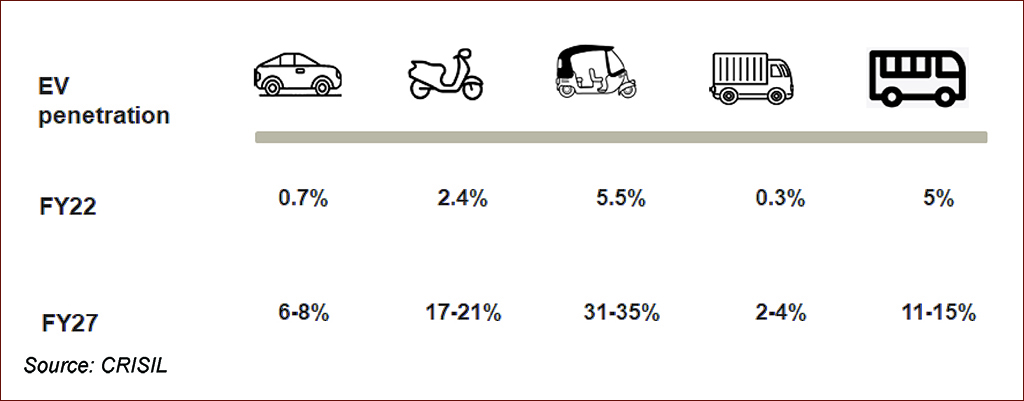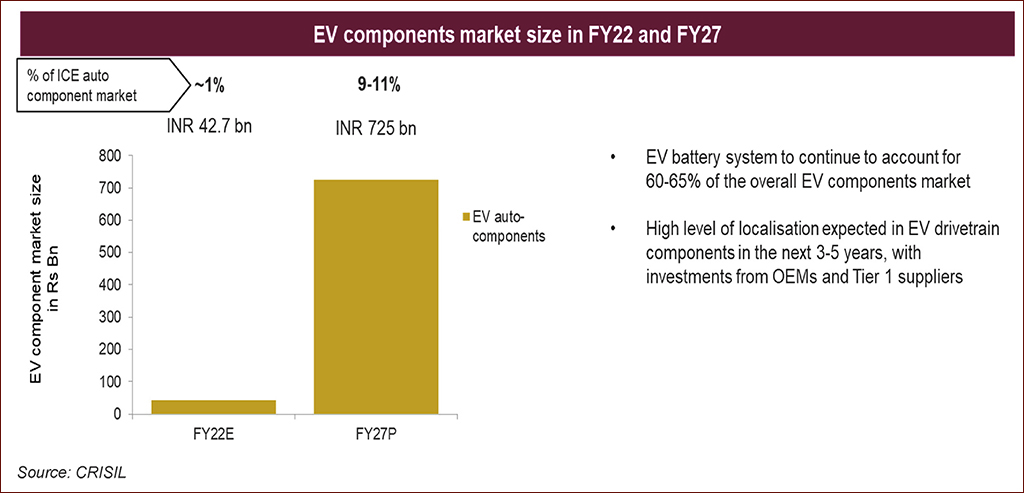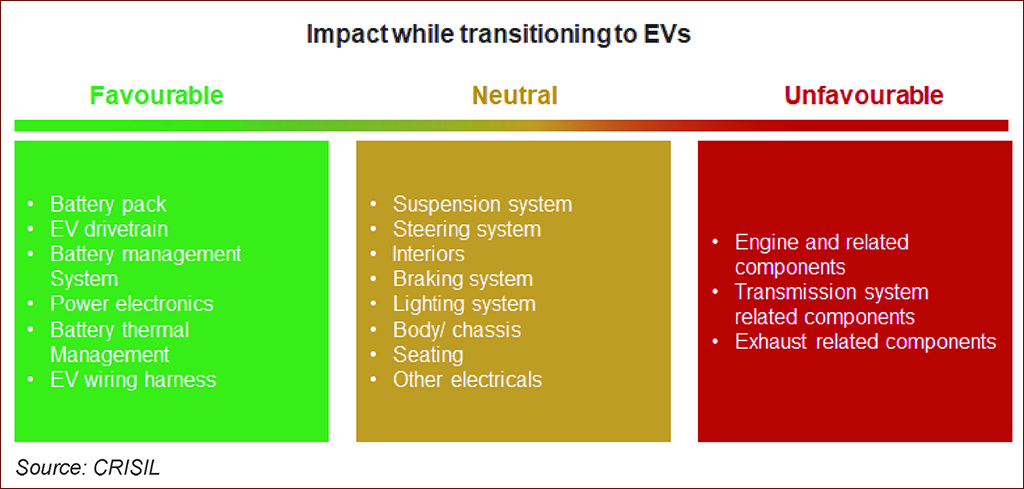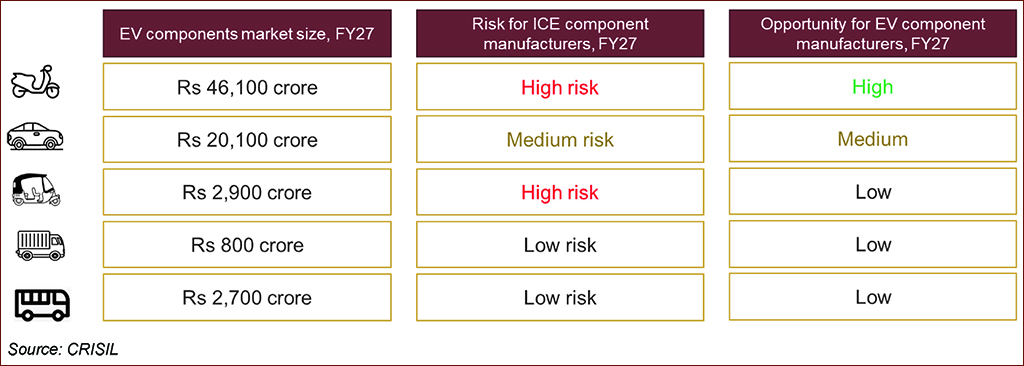
Better cost viability of EVs versus ICE vehicles and higher consumer demand for environmentally cleaner mobility will drive the transition to EVs, opine Naveen Vaidyanathan, Director, CRISIL Ratings and Pushan Sharma, Director, CRISIL Research
The electric vehicle (EV) components market in India is likely to register a healthy compound annual growth rate of ~76% in revenue to Rs 72,500 crore in fiscal 2027 from Rs 4,300 crore in fiscal 2022. With this, the share of EVs in the overall automotive components market is set to rise to 9-11% from a negligible 1% currently, even as the supply of parts for internal combustion engine (ICE)-driven vehicles also increases. As per a CRISIL Ratings analysis of 220 manufacturers that account for a third of the automotive components market, the transition to EVs will create both opportunities and challenges for domestic automotive component makers.

Better cost viability of EVs versus ICE vehicles and higher consumer demand for environmentally cleaner mobility will drive the transition to EVs. Amongst key auto segments, the transition will be helmed by two-wheelers and passenger vehicles (PVs). EV penetration in two-wheelers is likely to rise to17-21% over the next five fiscals, from ~2.5% currently. For PVs, the penetration will increase to 6-8% from less than 1% currently. However, commercial vehicles will see far lower penetration at 2-4% (0.3% currently) because of unfavourable economics. Three-wheelers and buses will see an estimated penetration of 31-35% (from 5.5% currently) and 11-15% (5%) by fiscal 2027. But in terms of revenue, these are smaller segments within the overall auto component market due to lower volume. This transition will have significant ramifications for the automotive component market.

EV batteries to account for 60-65% of EV component revenue by fiscal 2027, drivetrains (10-15%), electronics (10-15%) and others (5-10%) present an opportunity for automotive component players to diversify their revenue base beyond supplies to ICE vehicles. Almost 90% of EV component supplies are expected to cater to two-wheelers and PVs. Taking cognisance of the same, component players are already investing in developing electric components, both with established ICE original equipment manufacturers (OEMs) as well as with new age pure EV OEMs.

Out of the total EV component market estimated at Rs 72,500 crore by fiscal 2027, two-wheelers will account for the majority at 64% followed by PVs at 28%, presenting the biggest opportunity for component players. The balance made up of CVs, buses and 3-wheelers account for less than 10% of the estimated market. Within the existing automotive component market catering to ICE vehicles, ~75% revenue comes from body parts, chassis, suspension, electrical, braking, lighting and seating. As these are parts of EVs too, growth challenges for these components are unlikely. That said, players may need to partially reengineer their products to customise them for EVs, though they may be able to do so with incremental investments.

It is the remaining ~25% of automotive component supplies catering specifically to ICE engines and transmission components that could face challenges due to the EV transition. These include parts such as starters, alternators, fuel injectors, radiators, gear box, clutch, pistons, cylindrical block and exhaust system critical in an ICE vehicle but redundant in EVs. But here too, with the transition set to be faster in two-wheelers, automotive component players with concentrated exposure to this segment will be at greater risk than those supplying to PVs or CVs. To illustrate, engine and transmission component makers supplying majorly to two-wheelers account for only about 6% of the revenue of automotive component companies rated by CRISIL Ratings.
Pertinently, majority of the automotive component players (~50%) are diversified across multiple end-segments, thereby providing them a natural mitigant. Even so, players are also looking to de-risk their models by supplying EV components and increasing the share of non-auto and industrial products in their portfolio. All said, individual companies could gain or lose disproportionately depending on their product portfolio, customer mix, ability to reengineer, and balance sheet strength. Besides, creation of adequate infrastructure to allow for EV migration would also be critical.